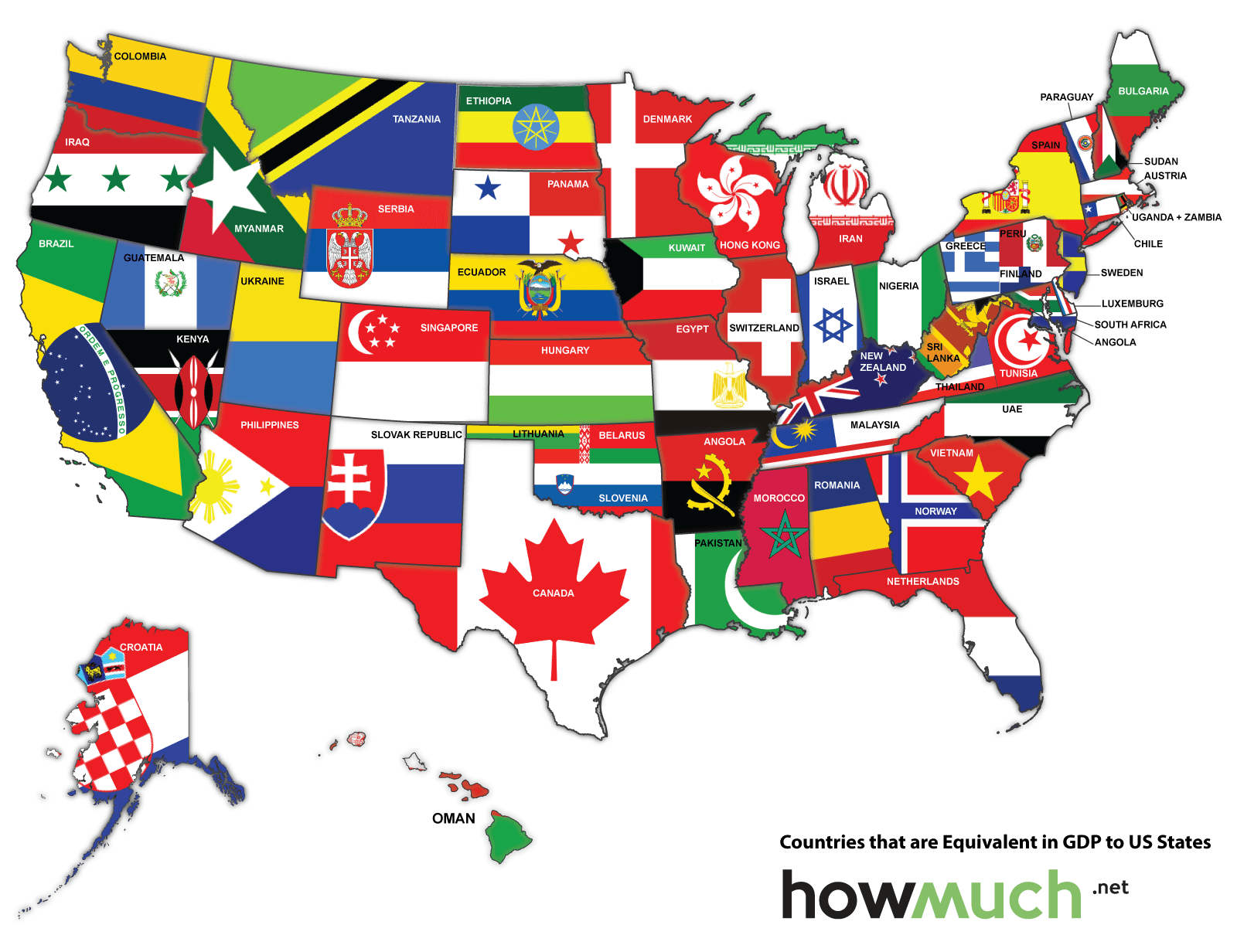The US economy is so big, that the economies of all 50 states are comparable in size to those of entire countries. To illustrate this, we used national GDP data from the International Monetary Fund (IMF) and state data from the Bureau of Economic Analysis (BEA) to put together a map that displays a country of comparable size (in terms of GDP) for each US state. All of the countries shown have 2014 GDPs that are roughly equivalent (+/- 10%) to the GDP of the state on which it is shown.

California and Texas are the two largest economies in the US. Amazingly, these states are equivalent in size to the 8th and 10th largest countries in terms of GDP in the World: Brazil and Canada. Other states like New York, Florida, Illinois, and New Jersey are equivalent in size to some very rich countries – Spain, Netherlands, Switzerland, and Sweden. The GDP of New York state is on par with Spain’s despite the fact that Spain has more than twice as many people.
The GDP of Ohio (a population of 11.6 million) is roughly equivalent to the GDP of Nigeria, a rapidly developing country with a population of 173.6 million. Some of the smaller states like North Dakota, Rhode Island, South Dakota, Montana, and Vermont are equivalent in size to small developing nations in Africa and Latin America (Ethiopia, Uganda & Zambia, Panama, Tanzania, and Paraguay).
While the relationships between country and state GDPs may shift over time, this overall phenomenon is likely to persist for the foreseeable future: The IMF projects that by 2020, US GDP will increase by $5.1 trillion to $22.5 trillion, extending its lead over all other countries, which will see much more modest gains (except for China which is projected to grow by $5.8 trillion). This means that the US and its states will continue to dominate the rest of the World in terms of economic size.
Data: Table 1
About the article
Authors
Irena - Editor





